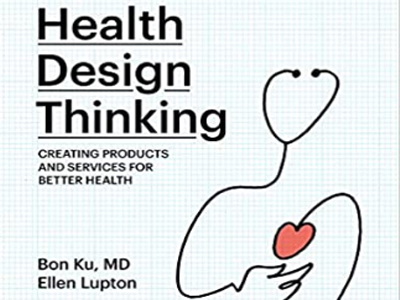As developers of medical devices, it’s our job to focus on the details required to take a design from concept to clinical readiness. There is a tremendous amount of work involved in conceptualizing, prototyping, verifying, validating, and obtaining FDA approval for a new medical device. That’s why it was interesting to attend a talk recently by the engaging and charismatic Dr. Bon Ku from Thomas Jefferson University, hosted by Colorado College’s Creativity and Innovation center. Dr. Ku is an emergency medicine physician currently on the front lines in the fight against the COVID-19 pandemic and the director of the Health Design Lab, which offers both medical students and industrial design students an environment for collaborating when tackling human-centered healthcare challenges. This center promotes the use of creative problem solving and design-centered approaches. Although Zewski’s goal is always to help patients and to assist clients in developing ideas that help patients, the talk provided some good ideas for all inventors and developers of medical devices to think about in terms of considering who will be using our devices and how. In addition, following the talk, Dr. Ku most generously handed out and signed copies of his newly published book: “Health Design Thinking”, co-written with Ellen Lupton and published by Cooper Hewitt, Smithsonian Design Museum, and MIT Press. I’ll include here some key points that may aid inventors of medical devices during the conceptualization phase.
Dr. Ku maintains that any solution to a healthcare challenge must be human-centered, and this involves cultivating empathy toward the patients involved, as well as involving them in the design, or learning how to codesign.
According to Dr. Ku, it is also important to adopt a creative mindset, and this includes: questioning, visualizing, prototyping, and storytelling. When it comes to questioning, he maintains that “a hypothesis-driven scientific method assumes you know which questions to ask.” Including questioning as a first step in the creative process allows for a wider range of questions to be asked. Visualizing involves using visual imagery such as shapes, colors, and illustrations to communicate ideas; this can include data representation such as graphs, as well as sketches of any portion of the challenge or proposed solution. Prototyping in this case means making a physical model of any kind – this can include sketches, storyboards, physical mock-ups, role-playing, and simulation. Storytelling involves communicating the way a device or solution will be implemented as well as providing a context for the health challenge. “A patient’s history is an ongoing narrative. Diseases, procedures, treatments, and therapies are processes whose cause and effect demand understanding, which can be aided by diagrams and models as well as by words.”
Specifically concerning the design of medical devices, Dr. Ku includes some helpful questions to ask:
- How has this problem been addressed before?
- What is the fundamental problem you are trying to solve?
- Who are the users, the consumers, and the purchasers?
- What value will the solution provide to the user, the consumer, and the purchaser?
- What are the foreseen obstacles and opportunities?
- How will I validate this idea?
The answer to the last question is easy – contact us! We can help you with all of your design and development ideas!
In summary, when it comes to designing new medical devices, according to Dr. Ku:
“Health design thinking empowers stakeholders to create new medical devices and improve the functionality of existing ones . . . nonetheless, translating an idea for a new device into an FDA-approved, commercially viable product is a herculean task. There is no recipe for simplifying this process. However, starting the process journey by asking good questions and applying design principles can set development in the right direction. The design principles embodied by a product will help determine whether clinicians will desire to use or prescribe the device, whether hospital administrators will purchase it, and whether patients will benefit from its use.”

